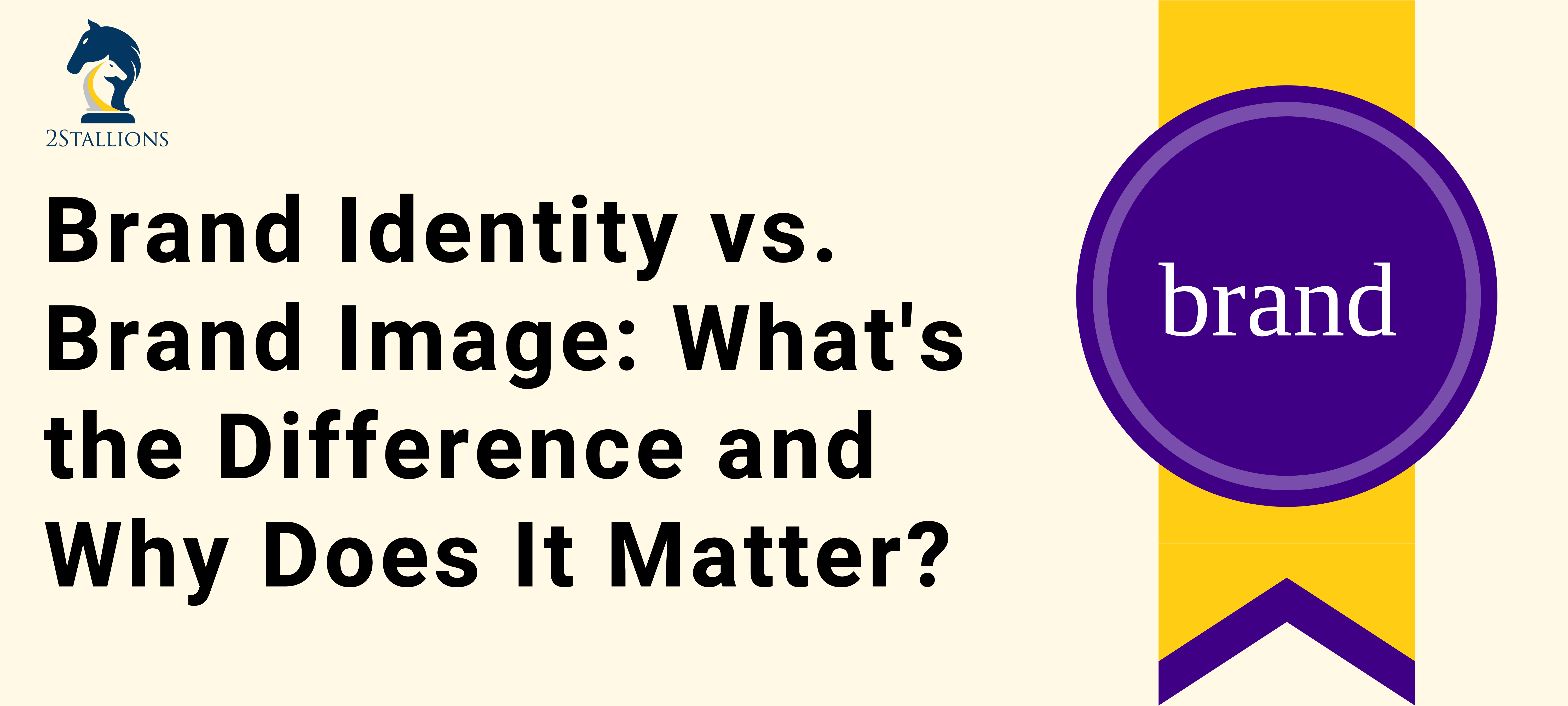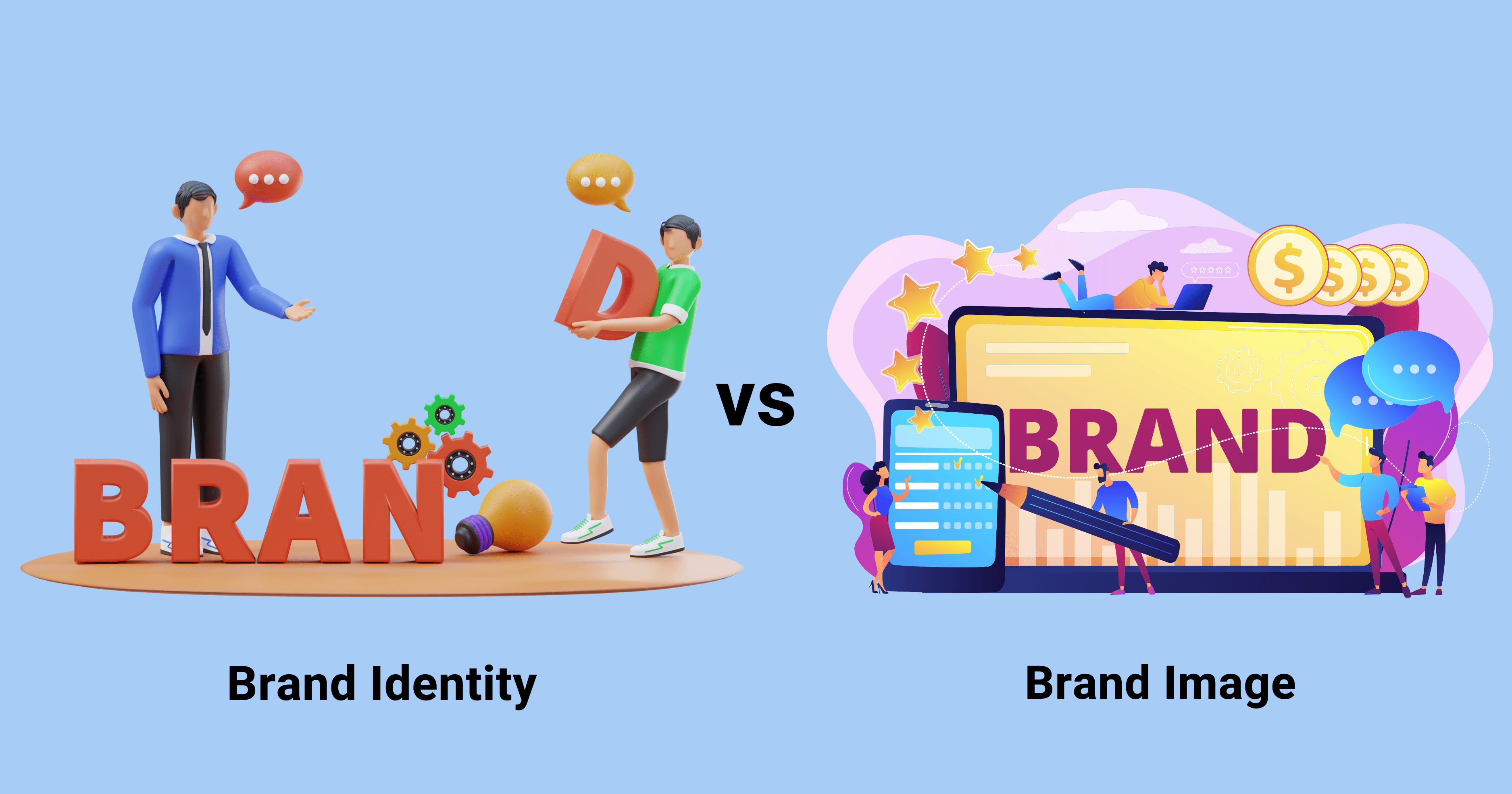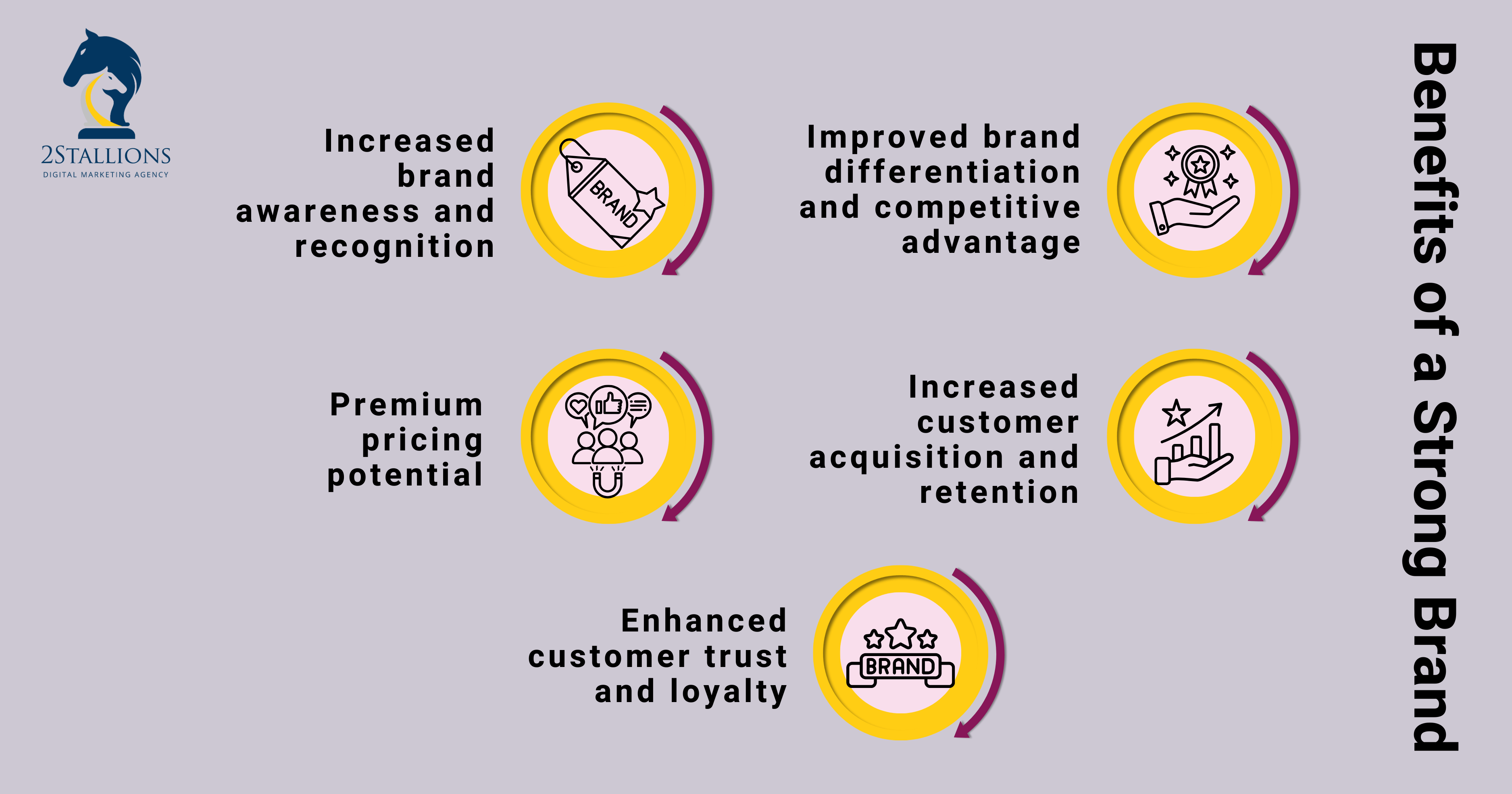SHARE

In marketing and business, terms such as brand identity and brand image are often used interchangeably. However, key differences between the two concepts are crucial for businesses to understand. In this article, we will delve into the definitions of brand identity and brand image, explore their significance in business, and provide strategies for managing and improving both aspects of a brand’s reputation.
Understanding The Concept of Brand Identity
Brand identity is the collection of visual and verbal elements representing a brand’s values, mission, and personality. It encompasses elements such as the brand name, logo, tagline, colours, typography, and tone of voice. These elements work together to create a unique identity for the brand, allowing consumers to recognise and differentiate it from its competitors.
When it comes to brand identity, it is not just about having a catchy logo or a memorable tagline. It is about creating a cohesive and consistent image that resonates with the target audience. A well-defined brand identity helps establish a brand’s market presence and builds consumer trust.
Let’s delve deeper into the components that make up a brand’s identity:
The Components of Brand Identity
Brand identity consists of several components that contribute to its overall perception. These include:
- Logo: A visual representation of the brand that often incorporates symbols or typography.
- Tagline: A short, memorable phrase that captures the brand’s essence.
- Colour palette: A selection of colours consistently used across all brand materials.
- Typography: The fonts and formatting styles used in brand communication.
- Tone of voice: The language and style used to communicate with the brand’s audience.
Each component plays a crucial role in shaping the brand’s identity. The logo serves as the face of the brand, instantly recognisable and conveying its personality. Conversely, the tagline encapsulates the brand’s core values and leaves a lasting impression on consumers.
Colour palette and typography are essential in creating a consistent visual identity across all brand materials. The choice of colours can evoke specific emotions and associations. At the same time, typography sets the tone and style of the brand’s communication.
Equally important is the tone of voice, which determines how the brand communicates with its audience. Whether formal and professional or friendly and casual, the tone of voice helps establish a brand’s personality and build a connection with consumers.
The Role of Brand Identity In Marketing
A strong brand identity is vital for businesses as it helps build recognition and recall among consumers. When a brand has a well-defined identity, it can effectively communicate its values, establish credibility, and foster emotional connections with its target audience. This, in turn, can lead to increased customer loyalty and advocacy.
Marketing efforts are greatly enhanced when supported by a strong brand identity. Consistency in branding across various channels and touchpoints helps create a cohesive brand experience for consumers. From advertisements to social media posts, a consistent brand identity ensures the message is clear and resonates with the intended audience.
Furthermore, a well-established brand identity sets a brand apart from its competitors. In a crowded marketplace, having a unique and recognisable identity helps consumers differentiate between similar products or services. It also allows the brand to occupy a distinct position in the minds of consumers, making it easier for them to make purchasing decisions.
Brand identity is about aesthetics and creating a meaningful connection with consumers. By understanding the concept of brand identity and its components, businesses can develop a strong and consistent brand that stands out in the market.
Delving Into Brand Image
While brand identity focuses on the elements businesses use to present themselves, brand image is consumers’ perception of a brand. It is shaped by their interactions with the brand, including their experiences, opinions, and associations.
How Consumers Perceive The Brand Image
Factors such as products or services, customer service, advertising campaigns, and public relations activities influence the brand image. Consumers form opinions about a brand based on their experiences and the messages they receive from the brand through different touchpoints.
The Impact of Brand Image on Business Success
A positive brand image can greatly impact a business’s success. When consumers have a favourable perception of a brand, they are likelier to choose its products or services over competitors. A strong brand image can help businesses attract and retain customers, differentiate themselves from competitors, and command premium pricing.
The Key Differences Between Brand Identity And Brand Image
While brand identity and brand image are related, they are distinct concepts that serve different business purposes. Understanding their differences is essential for effective brand management.
Brand Identity Vs. Brand Image: A Comparative Analysis
Brand identity is about how a brand wants to be perceived, while brand image is how consumers perceive it. The business defines brand identity, whereas the audience determines the brand image. Brand identity is the intended message, while brand image is the received message.
The Interplay Between Brand Identity And Brand Image
Brand identity and brand image are interconnected and mutually influential. The brand identity provides the foundation for shaping the brand image. Still, the image can also influence future iterations of the brand identity. Businesses must align their identity with the desired image and actively manage how consumers perceive their brand.
The Significance of Brand Identity And Brand Image In Business
Both brand identity and brand image play a vital role in the success of a business. They profoundly impact consumer behaviour, competitive positioning, and overall brand equity.
How Brand Identity And Image Influence Consumer Behaviour
A well-defined brand identity can attract and engage target consumers, evoke emotions, and drive purchase decisions. On the other hand, a positive brand image can foster trust, loyalty, and advocacy among existing customers, leading to repeat business and positive word-of-mouth recommendations.
The Role of Brand Identity And Image In Competitive Positioning
A strong brand identity and positive image can set a business apart from its competitors. They can give the brand a unique position in the market, making it more memorable and desirable in the eyes of consumers. This competitive advantage can be leveraged to increase market share and sustain long-term growth.
Strategies For Managing And Improving Brand Identity And Image
Managing and enhancing brand identity and image requires a coordinated and strategic approach. Here are some best practices to consider:
Best Practices For Building A Strong Brand Identity
- Clearly define your brand’s values, mission, and target audience.
- Develop a cohesive and visually appealing brand identity, including a distinct logo, tagline, and brand elements.
- Create brand guidelines to ensure consistency across all brand touchpoints.
- Communicate your brand’s story and values effectively through all marketing and communication channels.
- Continuously monitor and evaluate your brand’s performance and make necessary adjustments.
Effective Techniques For Enhancing Brand Image
- Focus on delivering exceptional customer experiences that align with your brand promise.
- Proactively manage your online reputation through social media listening and engagement.
- Seek feedback from customers and address any concerns or issues promptly and transparently.
- Leverage influencers and brand ambassadors to enhance brand credibility and reach.
- Invest in targeted marketing and advertising campaigns that resonate with your target audience and reinforce positive brand associations.
Businesses can create strong, reputable, and influential brands by understanding the differences between brand identity and brand image and actively managing both aspects. Combining a well-defined identity and a positive image can drive customer loyalty, differentiate a business from competitors, and ultimately contribute to long-term success.
Frequently Asked Questions About Brand Identity and Brand Image
What Is The Difference Between Brand Identity And Brand Image?
Brand identity refers to how a company wants to be perceived by its audience. It encompasses the visual elements, messaging, and values that a brand conveys to establish its unique identity. On the other hand, brand image is how the audience perceives the brand. It results from their interactions with the brand, including their experiences, impressions, and associations. While brand identity is what a company aims to project, the brand image is how consumers perceive it.
What Is Brand Identity, And Why Does It Matter?
Brand identity is the collection of elements a company creates to portray the right image to its consumers. It includes the brand’s name, logo, visual identity, messaging, and values. Brand identity matters because it helps differentiate a company from its competitors, establishes credibility and trust with consumers, fosters brand loyalty, and influences purchasing decisions. A strong brand identity communicates the brand’s essence and creates a connection with the target audience, ultimately driving business success.
What's The Relationship Between A Brand Statement Identity And Image?
A brand statement is a concise declaration that communicates the essence of a brand, its purpose, and its unique value proposition. It serves as the foundation for both brand identity and brand image. Brand identity is the outward expression of the brand statement, encompassing all the visual and verbal elements that convey the brand’s identity to consumers. On the other hand, brand image is how consumers perceive the brand based on their interactions and experiences. The relationship between them is that a well-crafted brand statement informs the development of a cohesive brand identity, which, in turn, influences the formation of a positive brand image among consumers.
What Is The Difference Between Brand Image And Brand Reputation?
Brand image refers to how consumers perceive a brand based on their experiences, interactions, and associations. It is subjective and can vary among different consumer groups. On the other hand, brand reputation is the overall assessment of a brand’s trustworthiness, credibility, and performance in the marketplace. It is based on product quality, customer service, corporate social responsibility, and public perception. While brand image is more focused on consumer perceptions, brand reputation is a broader evaluation considering various stakeholders’ opinions and experiences with the brand.



















